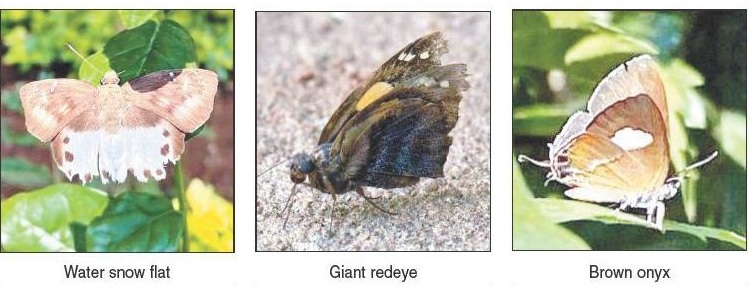C’garh, a bridge between Himalayan & Southern Indian species of butterflies
| Date :30-Jun-2020 |

By Roshan Chachane :
RAIPUR,
As three new species of butterflies have been added to the butterfly fauna, Chhattisgarh has been formally established as a bridge between Southern and Himalayan butterfly populations, it is a bridge which must not be broken for sake of diversity of the gene pool in Himalayan and Southern Indian states. Positioned at the centre of Indian sub-continent, Chhattisgarh act as a bridge between the Himalayan and Southern Indian population of butterflies.
The new species are discovered in Jashpur, which lies in the North-Eastern region of Chhattisgarh. Lepidopterist, Scientist Biodiversity Anupam Sisodia told that the three new species to be added are- Water Snow Flat, Giant Redeye and Brown Onyx. The butterfly faun now stands at a healthy 162 species, out of which he has contributed 22 species. The three new species have been photographed by Indian Administrative Service (IAS) Officer Nilesh Kumar Kshirsagar.
The then Jashpur District Collector IAS Kshirsagar promoted research and academic base. He actively encouraged scientific temperament and took steps to build regional capacity. To this end, IAS Kshirsagar had organized various seminar and training programme to train local surveyors with the assistance of Anupam Sisodia, who imparted training on habitat sensing, observation techniques, field data collection techniques, basic identification taxonomy of butterflies, data management and ethics in data collection. Population of these butterflies were previously understood to have been occurring in two disjunct zones of Peninsular India and the Himalayas. This paper proves that these populations are actually connected, sometimes tenuously, through the Eastern Ghats. Secondly, it appears that the populations linking the Himalayan and Southern Indian Butterflies are island populations, since species like the Brown Onyx have not been found in other parts of the state so far.
These findings are pivotal in terms of drafting an effective conservation plan for the flora and fauna of Chhattisgarh. On the basis of these findings, it makes it possible to get a better idea of what the forests of Chhattisgarh should contain in the future before it is lost to overgrazing by cattle, lopping for fodder, exploitation of forest resources and forest fires. Understanding of this original forest community structure would be important to conserve suitable habitats. This link between Southern and Himalayan population must not be broken, otherwise the populations would be entirely isolated. Even the present island populations of Chhattisgarh can become isolated if the distances between the islands becomes too great and it would stop the gene flow between two global biodiversity hotspots.